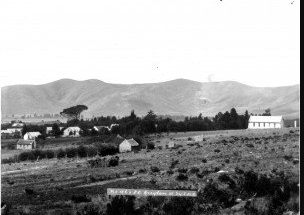
This Village of Greyton, in the Cape, was established in 1852. Although the first plots of land were only sold in 1854. It was named in honour of Sir George Grey, Governor of the Cape 1854-61. By 1891 the census indicated that it had a population of 276. The verdant plains and forested ravines of the area were home to the; Hassequas Khoikhoi tribe who had their kraals near the Gobos river, which they named after their ancestral chief. Their many thousand heads of cattle and sheep were the reason why Ensign Schriver of the Castle of Good Hope was sent here, in the late 1600's, to barter with their head man, Captain Stoffel Koekson. So rich did Koekson become from this bartering that he eventually took his people to live in the Boesmanskloof, where he built them proper mud-brick houses, the foundations of which still lie under the old houses of Boesmanskloof today. In 1793, Koekson’s tribal lands were given to the young Dutchman Marthinus Theunissen, who built a homestead (no longer standing) on his farm; 'Weltevreden'. He did not stay long because he could not resolve the constant disputes with his neighbour's at Boesmanskloof and Genadendal over boundaries and straying cattle. Subsequent owners of Weltevreden included two wealthy brothers of the famous Cloete family from Constantia who bred horses.
Marthinus Theunissen himself became a very wealthy man in Stellenbosch, owning Vergelegen at one time. In 1846 a wealthy Englishman, Herbert Vigne, bought Weltevreden. He established a freehold agricultural village on Weltevreden in 1854, keeping two small portions for himself and bequeathing the remainder of the farm as commonage. He named the village “Greyton”, after Sir George Grey, the then Governor of the Cape. The layout of the village was designed and set out by J G Rietz, a senior surveyor at the time, and remains essentially the same with only a few changes and additions through the years. The various sized properties were made available to buyers of any race, nationality or religion at affordable prices. This was the only town in the Cape in which such land with full title deeds, water rights and grazing rights was for sale to anyone.
https://www.facebook.com/949890305090709/posts/3797948046951573/
https://goo.gl/maps/UrEaQzk58JSQY2k66- Greyton Saturday Market
https://twinriverscamp.wixsite.com/mysite
http://www.greytontourism.com/activity/hiking-and-walking/
https://www.suidkaapforum.com/Pages/Visit-Hessequa